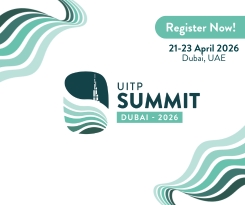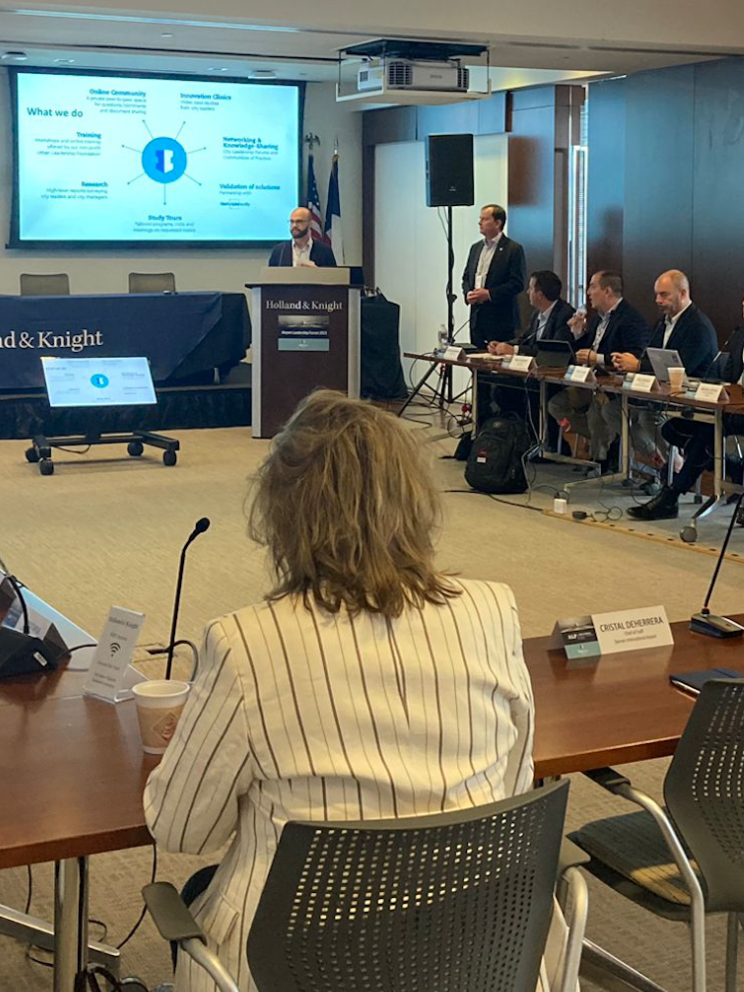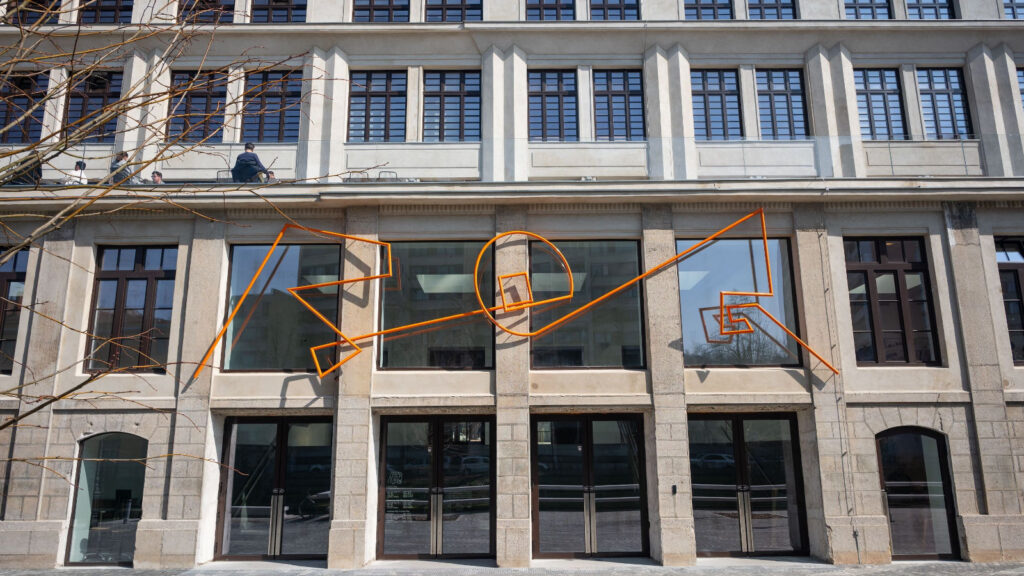
Center Rog: Ljubljana’s creative hub
07 July 2025
by Jonathan Andrews
If buildings could speak, they would tell stories of the people who passed through them–their dreams, their struggles, their hopes and accomplishments. Though silent, they witness our comings and goings, and both their walls and surroundings can be surprisingly expressive. They change shape, they shift in meaning, but something of their original soul always lingers.
If Center Rog could talk, its glass walls would speak of transformation, resilience and community, but above all, of creation. What do textile machines, Yugoslavia’s most famous bicycles and 3D printers have in common? This new creative hub holds the answer.
Where ideas take place
Located in the heart of Ljubljana, Center Rog opened its doors in November 2023 after more than a decade of planning, negotiation and construction. Funded by the City of Ljubljana, this space is designed to support makers, artisans, designers, architects and other creators in multiple fields, with a strong focus on sustainability, social responsibility and openness.
Housed in a historic factory, Center Rog is more than just a building. It is an inclusive and collaborative space where people of all ages and backgrounds can experiment, build, learn and connect in a shared environment that encourages innovation and care for the future.
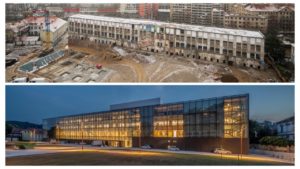
Concrete and glass
The building has a long and layered past. Originally a leather factory built in the first decade of the 20th century by the Ljubljanica River, right in the city centre, it was later transformed into Yugoslavia’s most prominent bicycle factory during the socialist era, with its brand’s name, Rog, being kept today as a memory of this time and relevance. Production stopped in the 1990s, after which the space was left abandoned and soon squatted by artists and activists. This informal use gave it a new energy, but also led to tensions with local authorities and nearby neighbours over the future of the site.
In 2000, the City of Ljubljana purchased the building, setting in motion what would become one of the longest and biggest cultural investment processes in Slovenia.
“The building itself is almost 9,000 square metres, and the factory yard is another 8,000 square metres,” explains Renata Zamida, Director General of Center Rog.
The renovation respected the building’s industrial character. Original windows and structural elements were carefully restored, and a new transparent annex was added to house communications spaces without concealing the old facade. The result is a space that openly blends past and present, fully integrated into the urban fabric.
The pilot project RogLab, launched in 2012, had a first approach to the potential of a public makerspace and laid the groundwork for what was to come. The pilot was part of a broader EU-funded project called ‘Second Chance’ carried out by Meta Štular, currently the Center Rog’s programme and strategic development manager. In 2018, the team was awarded the Eurocities Network’s Innovation Award. There were a couple of small 3D printers, sewing machines, and a laser cutter.
“That’s where we started to test the future programmes, but also how the public of Ljubljana felt towards managing a new public institution,” explains Renata.
Community involvement and citizen participation
Center Rog is the product of one of the largest participatory cultural processes in Slovenia. More than 6,000 people and multiple organisations were involved during its development. Local residents were invited to weekly construction site tours, often bringing personal stories and memories of the building, whether from past factory work or more recent squat-era events.
This sense of ownership is reflected in how the space is used. The ground floor hosts nine fully equipped production labs, ranging from woodworking, metal and textiles to culinary arts, glass, ceramics, jewellery and biotechnologies. There is also a library on-site, reinforcing the idea that access to knowledge and creation should be universal.
“The big idea was that it should be for everyone,” says Renata. “It doesn’t matter how old you are, what language you speak, or what your background is. And it doesn’t matter if you are an amateur maker or a professional designer. Everyone is welcome.”
Membership is open to all for a modest fee, with basic training provided to use the equipment. In just 18 months, Center Rog has welcomed more than 3,000 members, five times more than expected.
Outside, the former factory yard has been transformed into a public park, designed in dialogue with neighbours into an edible park. A volunteer programme, the ‘caretakers of the park’, helps maintain the space, which includes an orchard, a community garden of 25 raised beds and the green lab connected to the broader community.
Challenges in development
As with many urban redevelopment projects, Center Rog’s journey was not without friction. The participatory approach brought diverse visions to the table. Some feared gentrification, while others doubted whether such a complex project could remain truly public and inclusive.
The presence of squatters in the early 2000s created further tension. What began as an informal, temporary use gradually evolved into a deeper occupation, with cultural and social programmes that were not always aligned with the city’s plans.
Still, through a combination of political commitment, community engagement and adaptive design, the project moved forward. Strict heritage regulations shaped the renovation, which had to preserve the building’s 20th-century industrial features while adapting them to new use.
Broader impact
Today, Center Rog is both a creative powerhouse and a symbol of urban regeneration. Its users range from school children and amateur makers to engineers, start-ups and international designers. Local creators can apply to use project studios for up to three years, developing environmentally and socially relevant products. International residencies and design calls foster exchange with creators abroad.
“We want to be a place that welcomes creators from Slovenia and beyond,” says Maja Towndrow, Project Manager in charge of Residency Programmes. “They contribute to our events and bring in new perspectives. In addition, matching facilities abroad and bilateral agreements can foster creative exchanges.”
The centre’s annual Rog Design Days showcase work developed on-site, while a study visit programme invites like-minded organisations to explore potential collaborations and knowledge transfer.
After a successful first year, Center Rog is entering a new phase with initial numbers exceeding expectations, a full calendar of workshops and events, and strong participation in open calls. But for the team behind the project, these achievements are just the starting point.
“Now is when the scaling begins,” Renata affirms.
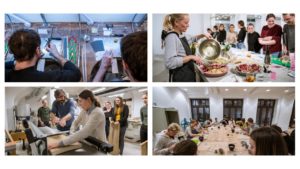
Creative and inclusive hub
This next stage is focused on building deeper connections with the surrounding community and ensuring that the centre continues to be a genuinely inclusive public space. One of the clearest examples is the newly introduced participatory budget. Each year, a portion of Center Rog’s budget is set aside for ideas proposed and selected by members. The initiative encourages democratic involvement, the feeling of ownership and gives users a direct voice in shaping the future of the centre.
Another strategic priority is social inclusion. Center Rog is currently developing specific programmes to engage migrants, asylum seekers and people from vulnerable backgrounds, working closely with NGOs to build trust and provide meaningful access. A community manager has been appointed to lead this work, identifying barriers and designing activities that create long-term relationships rather than short-term interventions.
The centre is also investing in partnerships. Collaborations with universities, research centres and city institutions are being strengthened to expand the educational offer and create bridges between creative practice and academic knowledge. There is a growing interest in using the space for interdisciplinary residencies, summer schools and experimental formats that combine design, science and technology.
Future expectations
At the same time, Center Rog is consolidating its role as a regional and international platform aiming to position Ljubljana as a reference point in the European creative ecosystem. This ambition is not driven by branding, but by a clear philosophy: to be a space where experimentation and care are not in conflict, and where local needs and global challenges can meet.
Looking further ahead, the team is also reflecting on long-term sustainability. How can the centre maintain its public character while remaining open to innovation? How can it continue to serve both professional creators and curious amateurs without falling into exclusivity or over-programming?
These are the questions that will shape Center Rog’s next decade. Urban regeneration rooted in heritage brings physical transformations, but also deep connections to local identity. When public authorities take active steps to preserve and reopen historic spaces, they help turn memory into a shared and living space that involves everyone.
As Renata concludes, “These are our first steps now to deepen the community in and around the Center Rog. We want to be an institution that follows the needs of our community, always in motion, reshaping, developing, adapting.”
This story was originally published on the European Heritage Hub’s website, co-founded by the European Union, and also on Eurocities website.
Images: Domen Nan, Branko Čeak and Jure Horvat


